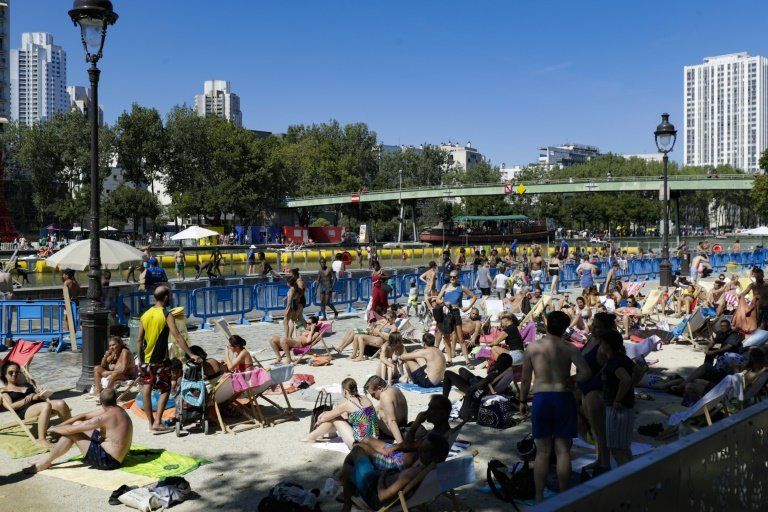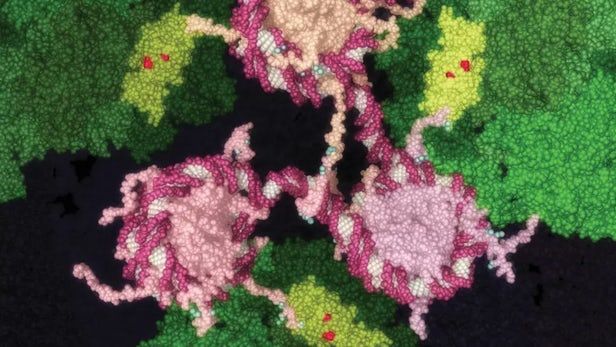Europe baked in near-record temperatures on Monday but hopes were for some respite after weeks of non-stop sunshine as people come to terms with what may prove to be the new normal in climate change Europe.
Here is a roundup of recent developments:


The plastic bag ban by the major supermarkets (and Coles’ pivot away from its ban after backlash, then pivot back to the ban after a backlash to the backlash) has left plenty of people scratching their heads.
What are the best replacements for single-use plastic bags? Given that reusable bags are much sturdier, how many times must we use them to compensate for their larger environmental impact?
The simple answer is that there is no simple answer. However, a kind of research called “life cycle assessment” can help us work out the impact of common types of reusable bags.

The state of artificial intelligence (AI) in smart homes nowadays might be likened to a smart but moody teenager: It’s starting to hit its stride and discover its talents, but it doesn’t really feel like answering any questions about what it’s up to and would really rather be left alone, OK?
William Yeoh, assistant professor of computer science and engineering in the School of Engineering & Applied Science at Washington University in St. Louis, is working to help smart-home AI to grow up.
The National Science Foundation (NSF) awarded Yeoh a $300,000 grant to assist in developing smart-home AI algorithms that can determine what a user wants by both asking questions and making smart guesses, and then plan and schedule accordingly. Beyond being smart, the system needs to be able to communicate and to explain why it is proposing the schedule it proposed to the user.



Cancer isn’t some foreign illness invading your body – it’s essentially just regular cells dividing out of control. Current cancer treatments like chemotherapy and radiotherapy are designed to kill tumors, but they often take down healthy cells as well. An emerging technique could provide a more targeted approach, stopping tumorous cells from proliferating and effectively putting the cancer to sleep.


If you thought you were safe from Lyme disease because you don’t live in New England, where the tick-borne illness first appeared, think again. Now, all 50 states plus the District of Columbia have residents who have tested positive for Lyme, a bacterial infection that can cause a wide variety of symptoms, including joint aches, fatigue, facial palsy and neck stiffness.
This news comes from a report from the clinical laboratory Quest Diagnostics, which analyzed the results of 6 million blood tests doctors had ordered to diagnose Lyme disease in their patients. The report found that Pennsylvania had the most positive cases last year: 10,001.
The Pennsylvania tally, along with that of the six New England states — Connecticut, Maine, Massachusetts, New Hampshire, Rhode Island and Vermont — accounted for about 60 percent of the country’s Lyme disease cases. Positive results grew by 50 percent in New England and by 78 percent in Pennsylvania from 2016 to 2017.

Cellular senescence used against cancer.
Researchers from the Walter and Eliza Hall Institute, the Monash Institute of Pharmaceutical Sciences, and Cancer Therapeutics CRC have developed a new type of drug that harnesses cellular senescence as a weapon against cancer [1].
Study abstract

Researchers from North Carolina State University and the University of North Carolina at Chapel Hill have developed a drug-delivery system that allows rapid response to heart attacks without surgical intervention. In laboratory and animal testing, the system proved to be effective at dissolving clots, limiting long-term scarring to heart tissue and preserving more of the heart’s normal function.
“Our approach would allow health-care providers to begin treating heart attacks before a patient reaches a surgical suite, hopefully improving patient outcomes,” says Ashley Brown, corresponding author of a paper on the work and an assistant professor in the Joint Biomedical Engineering Program (BME) at NC State and UNC. “And because we are able to target the blockage, we are able to use powerful drugs that may pose threats to other parts of the body; the targeting reduces the risk of unintended harms.”
Heart attacks, or myocardial infarctions, occur when a thrombus – or clot – blocks a blood vessel in the heart. In order to treat heart attacks, doctors often perform surgery to introduce a catheter to the blood vessel, allowing them to physically break up or remove the thrombus. But not all patients have quick access to surgical care.